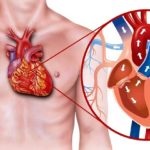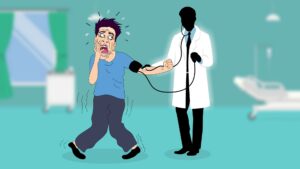
How to Prevent Obesity in Kids and Adults
India is a country of huge population and social contrasts. Malnutrition is widely prevalent in India, but at the same time, it is a nation with people who are gaining weight fast. Obesity is slowly emerging as a significant health issue in the country. Hence it is the need of today to prevent obesity.
The rise of obesity in India can be explained by economic success and changing lifestyle. At present, around 5% of adults in India are obese. The number of obese people is only going to rise in India. What is more worrisome is the rise of obesity among the young children. Research report cards indicate that even the young or school goers are not getting enough of physical activity. Again that has a relation with change in lifestyle (computers, mobile devices, reduction in green spaces).
Understanding Obesity
A person is obese if his or her BMI is above 30. BMI (body mass index) is a body weight according to age and height. To calculate your BMI, you can use the online calculator here. For calculating BMI, you need to know your body weight, age, and height. It is worth remembering that some weighing machines can automatically calculate and tell your BMI.
BMI 20-25 is considered normal, and 25-30 is regarded as overweight. However, it is worth knowing that these formulas were created by studying European populations. The latest research indicates that for Indians, things differ. They develop the risk of diabetes and heart disease at much lesser body weight. Thus it is proposed that an Indian with BMI above 28 should be considered as obese and above 23 as overweight.
Further, it is also important to understand that not all types of obesity are equal. Have you ever thought, why Europeans have fewer heart problems in comparison to Indians, though they are more obese? Reason for such difference lies in genetics and type of obesity.
In India, so-called central or visceral obesity is more widespread. Central obesity is when there is more fat accumulation on the belly, or around the internal organs. Subcutaneous fat found in hands, legs, and other parts of the body is less dangerous.
Studies show that subcutaneous fat is easier to burn than visceral fat. Further, these fats differ in physiological properties. Therefore, visceral fat is more dangerous for health. It explains why even mildly overweight, or even normal-weight Indians are at higher risk of developing diabetes or heart conditions.
How to prevent obesity in kids and young children?
Those who are obese at a young age, often remain obese in later life. Hence, start controlling your child’s body weight to prevent obesity in adulthood.
- Studies show that breastfeeding has a relation with reduced risk of obesity in kids.
- Start by changing food. It will benefit all in the family. Cut down food items that are high in fat content. Include plenty of veggies, whole grain products. Limit sugary beverages. Also, make sure that portions are of reasonable size.
- Next, encourage children to spend more time outside, instead of watching television. Limit the time they watch TV. Try to limit your time in front of the TV too, and be a role model for your child by staying active.
- Teach your children to eat slowly when hungry. Also change their snacks, like providing a bunch of grapes or a banana, instead of chips.
- Change the food items that you store in the fridge. Store low-fat items like fruits, vegetables only.
- For children and teenagers, time spent on physical activities must be longer than adults. They must participate in physical games/sports for at least 60 minutes a day. It is a good idea to start with activities that your kid enjoys most. Ask them to play or participate in outdoor sports more often.
How to prevent obesity in adults?
Remember that obesity runs in the families not only due to genetics but also due to similar kind of habits. So changes you make in yourself would affect the entire family.
- Most importantly, come up with a plan for physical activity. Remember that physical activity is not just about losing body weight. It also improves cardiovascular health, respiratory health, boosts metabolisms, and strengthens muscles and joints. Adults should engage in at least 30 minutes of moderate intensity exercise each day.
- Veggies are not only good for kids but also for adults. Also eat more of whole grains like oatmeal breakfast, popcorn’s for a snack (just in small amounts). Remember that brown bread is not necessarily made from whole grains.
- Start by cutting down consumption of fats. Eat less of food items that are dense in calories like fried potato, cheese. Also cut down on frequent snacking in between the meals. Same steps would work for both adults and kids.
- During the day, use opportunities to burn calories, like walking more often and climbing stairs.
Conclusion
Obesity kills and it also reduces the quality of life. Genetically, Indians are predisposed to metabolic disorders like high blood pressure and heart diseases. Obesity is just going to make it worse. It not only leads to diseases of the heart, but also increases the risk of joint problems in old age. Obese children may play less, make fewer friends, thus it affects their mental development. Obesity and sedentary lifestyle are emerging as significant health challenges. Hence increase your physical activity level and monitor your body weight regularly to prevent obesity.













